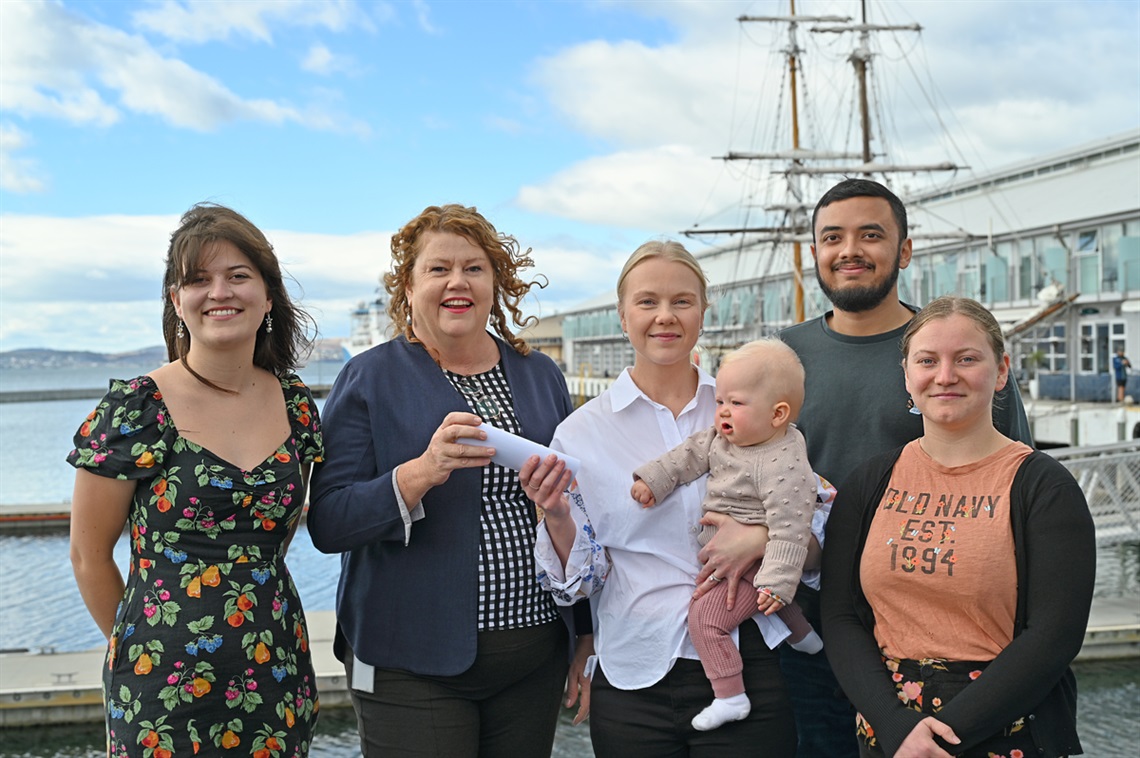
When Rahat arrived in Hobart from Bangladesh, he was immediately hit by Tasmania’s pristine environment – and he wants to keep it that way.
At a glance
- The City of Hobart has recently concluded Tasmania’s first Hobart Climate Assembly.
- The Assembly brought together 33 participants aged between 16 to 75 from across Hobart, reflecting the diversity of the City.
- The ten prioritised community recommendations from the Assembly will help form the City of Hobart’s Climate Strategy and how the Council and community can respond to climate change.
Rahat originally came to Hobart to study at the University of Tasmania, but now he is a father and small business owner and was one of the 33 members of the state’s first Climate Assembly, run by the City of Hobart.
“Being a migrant coming here as an international student, as I walked down from the plane the air hit my nostrils and it was beautiful,” Rahat said.
“I came from Dhaka, Bangladesh, one of the most polluted cities in the world and I feel like Tasmania is beautiful, it's like heaven and the statistics say we have the best water in the world, best air in the world.
“Then after studying you can see the (2018) flood in the university and other places and then starting my own business, I see my local council is addressing a climate assembly.
“So, if something that to me looks so pristine is concerned about climate, then I have to give it another thought so we have to make time outside of our work, our studies and so on, it is very important.
“What I feel like is climate change is a real problem if we don't address it now we won't have something to be busy with after 20 -30 years.
“So that's why I'm very interested and very much involved with climate change to make a statement.”
The climate assembly, representing a diverse range of participants aged between 16 and 75, met across two weekends discussing the climate and biodiversity emergency and hearing from experts in this area.
The assembly then put forward 10 priorities for the Hobart City Council to consider as part of the City of Hobart’s Climate Strategy.
The priorities were:
- Develop a network of connected and safe walkways, cycleways to encourage active transport (incl. footpath upgrades, pathways, trails and cycleways).
- Develop a network of green corridors throughout the city to increase tree cover, cool the city, improve liveability and movement.
- Stop selling offsets and giving someone else permission to pollute.
- Phase out fossil fuels from Council operations, including through assets, supply chains and investments.
- Develop a network of waterways, wetlands and blue corridors to improve irrigation and manage runoff from heavy rainfalls, reduce pollution/flooding.
- Implement fire management programs that improve biodiversity and bushland health.
- Advocate to develop a zero emissions public transport system that encourages usage through increased availability and better user experience.
- Provide safe and inclusive publicly accessible spaces for extreme climate-related events for priority communities and those who require support.
- Use planning, legislation and regulatory controls to reduce risk; and assess and improve critical infrastructure across the city to be climate ready.
- Provide support and financial incentives to households, businesses and neighbourhoods to electrify and retrofit.
For university student Chloe Holley, transport was a key priority for her.
“There was a lot of focus around transportation in Hobart, people want to see more public transport, more cycle ways, more walkways and less cars on the road,” Chloe said.
“There are a lot of co -benefits associated with fixing up our transportation systems.
“We can have healthier people, happier people in green spaces especially. And it's much cheaper for the community to rely on public transport rather than fuelling up their cars every week.”
Hobart Lord Mayor Anna Reynolds said it was vitally important to hear from the community when addressing the climate and biodiversity emergency.
“So when we develop a plan it's really important that we bring the community along with us and we ensure that we're tapping into their knowledge and their feedback and their ideas because this isn't a small problem,” Cr Reynolds said.
“We all have a role in coming up with those great solutions, so the Climate Assembly was the Hobart Council's commitment to involving the community – not just in providing feedback on our ideas, but actually giving us ideas.
“And so that's why this process has been so amazing.”
Pictured: Hobart Lord Mayor Anna Reynolds (second from left) receives the Climate Assembly recommendations from community representatives from (left to right) Grace Elliott, Emma Hoksbergen, baby Lila Halstead, Rahat Md Imadul Islam and Chloe Holley.